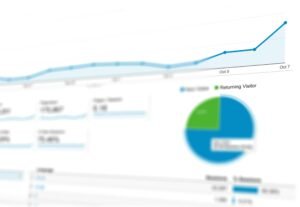The difference between HTML and XML sitemaps are two main types of guides for both humans and search engines. Think of HTML sitemaps like a user-friendly map, showing you every nook and cranny of a website. XML sitemaps, on the other hand, are like a secret decoder ring for search engines, helping them find and index all your sweet content. Understanding their differences is key to mastering website navigation and SEO! Ready to see the magic? Let’s get to it!
Understanding HTML Sitemaps
An HTML sitemap is like a website’s roadmap. It’s a list of all your web pages, organized neatly, much like a book’s table of contents. Often found in the footer, these sitemaps help visitors easily find what they need. They link all your site’s pages, making navigation simple for users.
How do HTML sitemaps enhance user experience? Imagine exploring a complicated website. It can feel like navigating a maze. With an HTML sitemap, it’s like having a map in a shopping mall. You skip confusion and find your page easily. It makes browsing effortless!
Benefits of using an HTML sitemap include:
- Easy Navigation: Quickly locate web pages.
- User-Friendly: Simplifies complicated sites.
- Page Organization: Clearly displays structure.
- Improved Accessibility: Ensures reachability of all pages.
- Enhanced UX: Increases user satisfaction.
In website navigation, HTML sitemaps are key. They cater to human needs, making navigation intuitive. Whether it’s a small blog or a large e-commerce site, an HTML sitemap keeps users satisfied and engaged.
Exploring XML Sitemaps

XML sitemaps are like the website’s blueprint for search engines. They list vital pages, posts, media, and tags, helping engines like Google crawl and index them efficiently. Think of them as a search engine’s backstage pass.
How do XML sitemaps assist search engines? They guide them to the important pages, highlighting update frequency. This enables engines to index crucial pages swiftly. No important page is left unindexed!
An XML sitemap lists URLs for search engines, shows update frequency, highlights URL priority levels, and details URL relationships.
XML sitemaps are crucial for SEO. They help search engines understand your site, improving rank potential. It’s like giving your site a megaphone in the digital landscape!
HTML vs XML Sitemaps: Explained
Who are HTML and XML sitemaps created for? That’s the question. HTML sitemaps cater to visitors, providing an easy navigation guide. XML sitemaps, however, target search engines. They detail the structure, aiding efficient indexing.
The difference between HTML and XML sitemaps:
- Audience Target: HTML for humans, XML for engines.
- Purpose: HTML aids navigation; XML boosts SEO.
- Format: HTML is readable by humans, XML by machines.
- Content Focus: HTML focuses on key pages; XML includes all URLs.
- Updating Process: HTML requires manual, XML supports dynamic updates.
How do these sitemaps support SEO and navigation? XML ensures comprehensive search engine visibility. Meanwhile, HTML improves the user experience. Like a tour guide and GPS, they complement each other.
Both sitemaps play vital roles. XML ensures search engine visibility, and HTML enhances user experience. Using both covers all bases—user-friendly and search engine-friendly. A win-win!
Importance of Sitemaps in SEO

In trying to understand the difference between HTML and XML sitemaps, XML sitemaps guide search engines to your site’s vital pages, enhancing crawl efficiency. Without them, crucial pages might go unindexed. Indexing is vital, as unindexed pages won’t appear in search results. Thus, XML, sitemaps are essential for site visibility.
SEO benefits of sitemaps include:
- Enhanced Visibility: Ensures all pages are found.
- Improved Rankings: Aids search engines in understanding content.
- Faster Indexing: Speeds up new page indexing.
- Comprehensive Coverage: No page left behind.
Combining XML and HTML sitemaps improves SEO results. XML aids search engines, while HTML simplifies navigation for users. This combination enhances your online presence, offering a seamless experience. Cater to both search engines and users for success.
Best Practices for Implementing Sitemaps
When it comes to the difference between HTML and XML sitemaps, using both XML and HTML sitemaps will be like having a superhero on your team for your site. XML helps search engines explore every corner, while HTML guides visitors. Together, they enhance site navigation and visibility.
Updating and Maintaining Sitemaps
Regular updates are key to effective SEO. For HTML sitemaps, ensure they reflect new content. This informs search engines of updates. For HTML sitemaps, ensure they list all main pages. This provides users access to the latest content.
Sitemap generators simplify the creation and updating process. Compatible with platforms like WordPress and Google, they save you time by automating changes.
Submitting sitemaps to search engines, like Google, ensures functionality. Use tools such as Google Search Console for submission. It helps engines crawl efficiently, potentially boosting search rankings! 🚀
Conclusion
Understanding the difference between HTML and XML sitemaps reveals that they’re both essential tools. HTML sitemaps guide users through a website with ease, while XML sitemaps help search engines index pages efficiently. Together, they improve both user experience and search engine rankings. By using both, you ensure your website performs at its best, keeping the web well organized!
FAQ
What is the difference between HTML and XML sitemaps?
An HTML sitemap is designed for people to navigate websites. XML sitemaps are technical files for search engines to index site content. They play different roles, aiding users and boosting SEO.
Are HTML sitemaps good for SEO?
HTML sitemaps enhance SEO by improving navigation and user experience. They make it easier for users to find content, which can positively impact site performance and rankings.
What is an HTML sitemap?
An HTML sitemap is a webpage that lists all the pages on a site. It’s organized hierarchically to help users easily find their way around the site.
How do I check the HTML sitemap?
To check an HTML sitemap, visit the webpage where it’s located, often in the site’s footer. It’s a navigational tool listing all site pages for easy access.
What is XML sitemap in SEO?
An XML sitemap is a file that outlines a site’s structure for search engines. It helps search engines efficiently crawl and index the site, boosting SEO.




